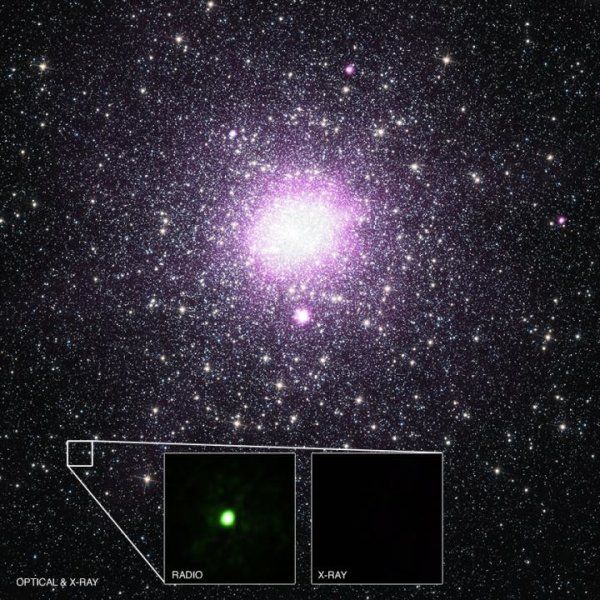Astronomers have combined data from NASA’s Chandra X-ray Observatory, the Hubble Space Telescope and the National Science Foundation’s Karl G. Jansky Very Large Array (VLA) to conclude that a peculiar source of radio waves thought to be a distant galaxy is actually a nearby binary star system containing a low-mass star and a black hole. This identification suggests there may be a vast number of black holes in our Galaxy that have gone unnoticed until now.
For about two decades, astronomers have known about an object called VLA J213002.08+120904 (VLA J2130+12 for short). Although it is close to the line of sight to the globular cluster M15, most astronomers had thought that this source of bright radio waves was probably a distant galaxy.
Thanks to recent distance measurements with an international network of radio telescopes, including the EVN (European Very Long Baseline Interferometry Network) telescopes, the NSF’s Green Bank Telescope and Arecibo Observatory, astronomers realized that VLA J2130+12 is at a distance of 7,200 light years, showing that it is well within our own Milky Way galaxy and about five times closer than M15. A deep image from Chandra reveals it can only be giving off a very small amount of X-rays, while recent VLA data indicates the source remains bright in radio waves.
